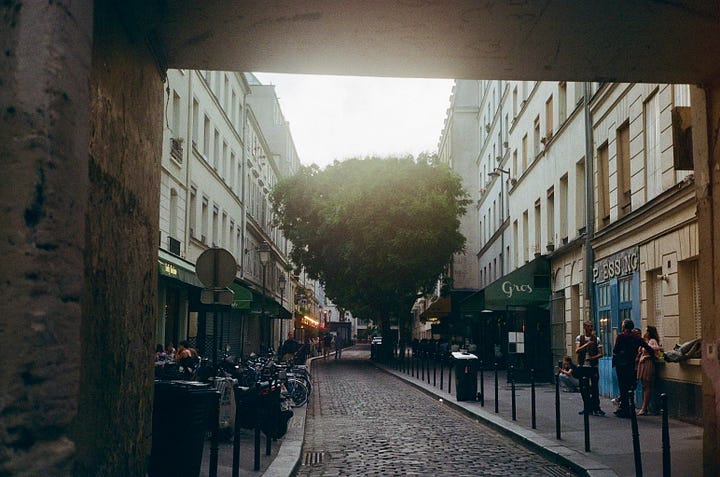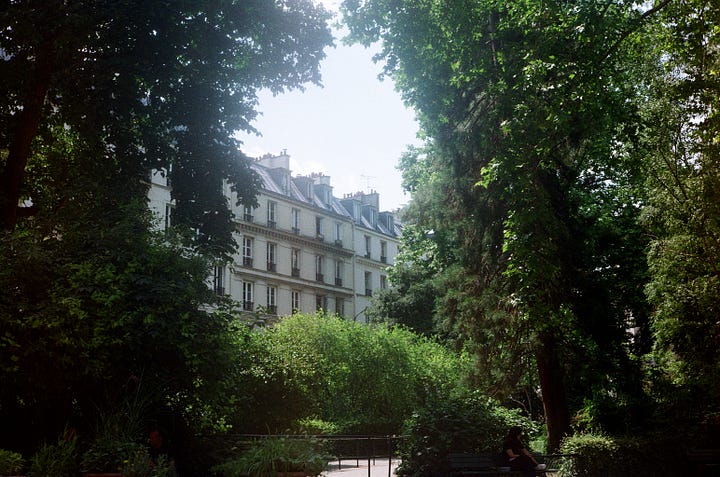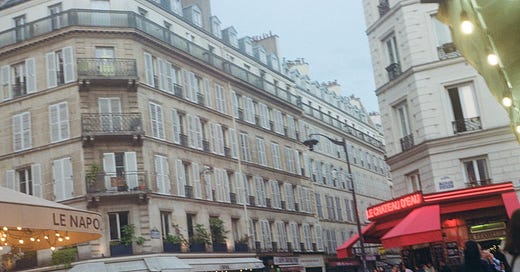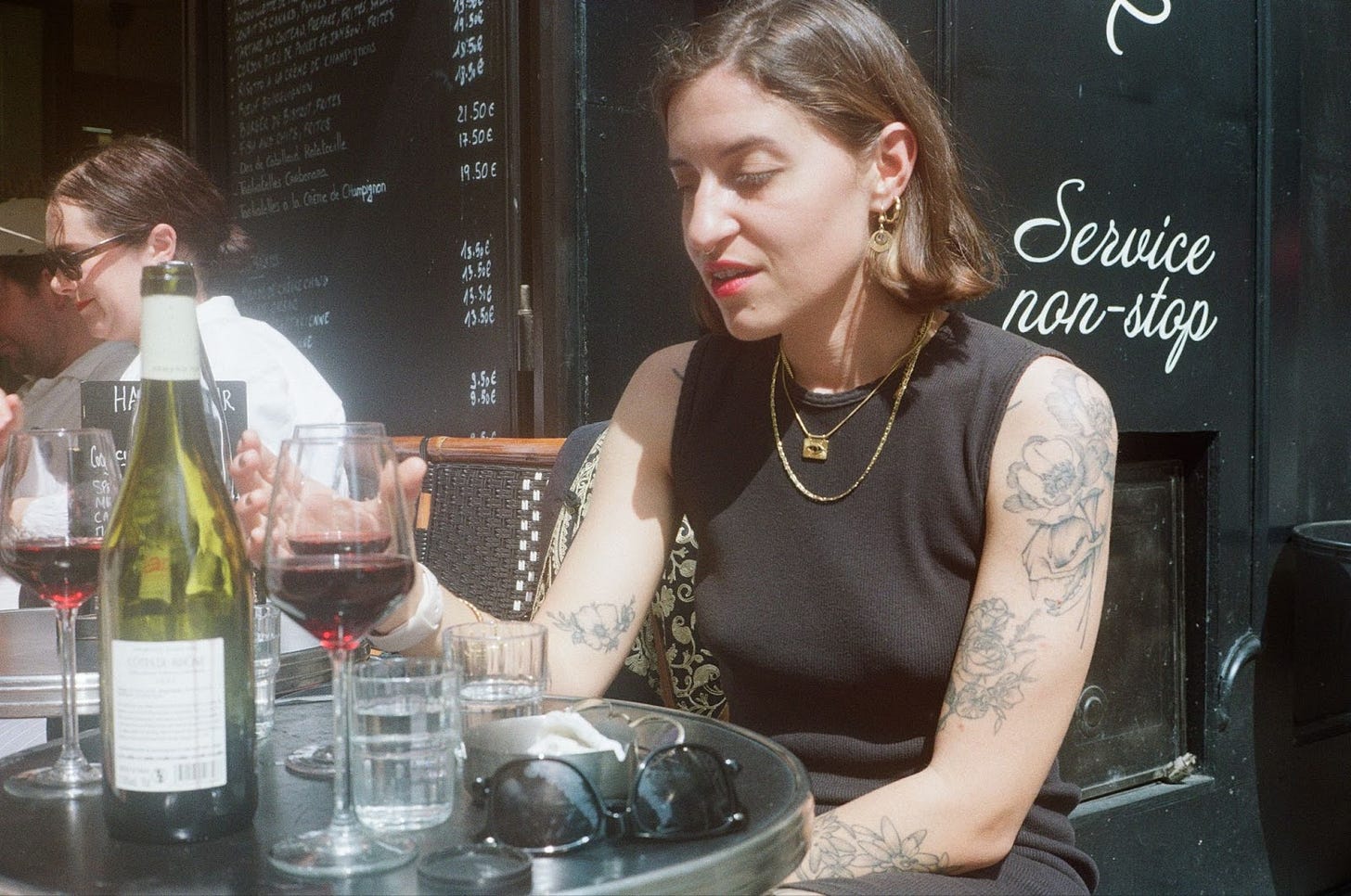Yesterday I turned 29 years old! In the last year, I wrote about AI and economic divides in San Francisco, learned to shoot a fully-manual camera, created my own inflation index, and savored the slow route. In today’s inbox, I compiled some stray reflections on my own European travel.
It’s the summer of overtourism, the summer of overconsumption, the summer of anti-tourist protests boiling over in Mallorca, Venice, and Mexico City and a Labubu dangling from every straw tote. The trendy newsletters and “smart tourism” tiktokers are all hawking the beauty of undiscovered destinations like Albania and the Dolomites, setting the stage for Americans to descend upon them like lantern flies on their annual ten-day trip abroad. It appears that European tourism, and tourism in general, has recovered from its pandemic lull. And why not? Who wouldn’t want to sip an Aperol spritz on a densely-packed veranda, marvel at some old buildings, and have a cacio e pepe in its birthplace – especially for a fraction of the price back home?
Yet, it is no surprise that stark economic divides are fueling intense frustration among locals. Many local governments seem incapable (or unwilling) to manage skyrocketing housing costs and strained infrastructure. It also probably stings to watch an American tourist walk into your restaurant and comment on how “cheap” everything is, or watch how little tourists engage sincerely with the culture. Increasingly cities seem to embrace a “dual economy” approach: one for tourists and one for locals. Restaurants in Tokyo have been caught increasing the prices of dishes on English menus, but who could blame them – as rich Americans who paid thousands for their flights overcrowd a country that has been experiencing recessions for so long that economists refer to them as “Lost Decades”?
Despite these awkward collisions of culture and inequality, transatlantic travel is pretty accessible, buoyed by low-cost airlines like French Bee and ZIP AIR and cheaper flights than last year. Plus social media has convinced me I can fix my life by simply embracing la dolce vita. Or at the very least, I’m not immune to the appeal of having wine and cheese in a sunlit medieval square.
It didn’t take much for me to give in. In early June, I joined two friends for a weeklong trip to Paris. Rationalizing it felt easier once I’d set a goal: if I could keep the trip flights and hotel costs down thanks to long-accumulated credit card points and compromising on some less desirable flights, and travel somewhat-ethically, the trip was worthwhile. Besides, the experience of a new place is genuinely improved when staying at a locally-owned hotel, taking public transportation, and spending enough time away from tourist hotspots that you’re forced to communicate in the local language.
I wanted it to be a personally meaningful trip, so in advance of my SFO>CDG flight, I read three autobiographical/autofiction-y books by iconic French women: The Lover by Marguerite Duras (translated by Barbara Bray, first published in 1984), NAME by Constance Debré (translated by Lauren Elkin, published in English in 2025), and The Use of Photography by Annie Ernaux and Marc Marie (translated by Alison L. Strayer, published in English in 2024). The topics I assigned myself to contemplate were enduring love, fading memory, the complications of family, and changing one’s identity – all quite stereotypically French.
The Lover is a story of a teenage French narrator falling in love with an older Chinese man in colonial Vietnam. The narrator and the love interest meet by chance on a ferry — one of the more memorable scenes I’ve read in a while.
NAME focuses on the narrator’s rejection of her family’s prestige and role in French political history in pursuit of a more authentic way of living. I hadn’t read Debré’s first two books, and I worry I missed something major there. A few strong poetic passages pushed the book into “like but not love” territory.
The Use of Photography is not my first or my favorite Ernaux (Simple Passion, the story of her two-year affair with a married man, is probably my favorite), but I enjoyed its unique premise – each time Ernaux hooked up with the journalist Marc Marie, they photographed the aftermath of strewn-about clothes and each wrote reflections. While writing it, Ernaux was undergoing chemotherapy for breast cancer. Rhian Sasseen noted in the Atlantic that the book “emphasizes sensuality in the face of death.”
Duras, Debré, and Ernaux share a strand of confessionalism that at times borders on voyeuristic (especially Ernaux), but its sincerity makes them feel deeply human. The role of shame, family, and romantic partnership play a heavy role in each – but of the three, I only found myself retreating again and again to The Lover.
So I had much to think about over our mid-day bottles of wine and while lurking through art museums. Though the trip was less than a week, it’s great to bathe in the cultural norms that are not your own and let them tell you something about how you live your life. Some of my favorite:
The magic of the three-hour dinner, being able to tell a silly story to friends and let it linger for a half hour, which I otherwise would have shared in a three- or four-line text message.
Witnessing and laughing at the chaos after a successful Paris St Germain football match, hearing countless chants on the train and trying not to be too spooked by the fireworks in the streets above.
Not searching for the “best” version of a cuisine and simply eating at nearby neighborhood restaurants and cafes (at the advice of my most Parisian friend, Thomas).
Staying at another friend’s apartment for the night, who happened to live above the square where “Emily in Paris” was filmed, laughing as we had to elbow away The Emilys (surely visitors from the U.S.) who were huddled in front of the building taking Instagram pics.
The trip was host to many other realizations. Moments spent at bakeries with croissants that cost less than a euro, leaving me to contemplate the $6.25 (plus tax and 20% tip) I typically pay for a Tartine croissant here in San Francisco. There were moments where I missed the train by a half-second and got mad – only to realize another was coming in less than 3 minutes (making me think back to the time I missed a single BART train and it somehow cascaded into two missed work meetings).
A French friend bragged at how cheaply he could see a doctor, and I thought of the physical therapy I’d had to pay for to fix a nerve issue in my neck (eight sessions, each $180 after insurance). It is hard to imagine anyone leaving Europe and not feeling that many twentieth century innovations were antithetical to human well-being (except for air conditioning).




Mostly I just sought to bring a heart and soul to travel. The tenderness of The Lover, the confidence of NAME.
Once, I had a really exceptional cold brew and told the barista it was among the best I’d ever tried. She grew a bit emotional as she explained she had painstakingly barrel-aged the concentrate and her experiment had thus far gone under-appreciated. So we went back to the cafe twice more, smiling at her each time as she stacked paper cups in the back, if only to show that we meant it.









This was heartfelt. Happy belated 🎈
Deep set need to try the cold brew